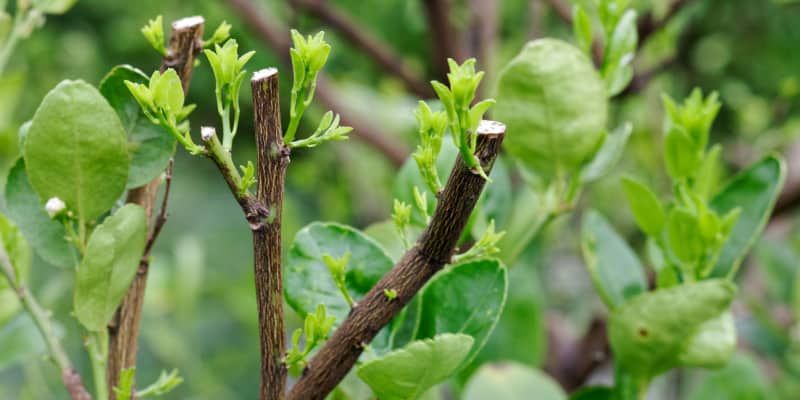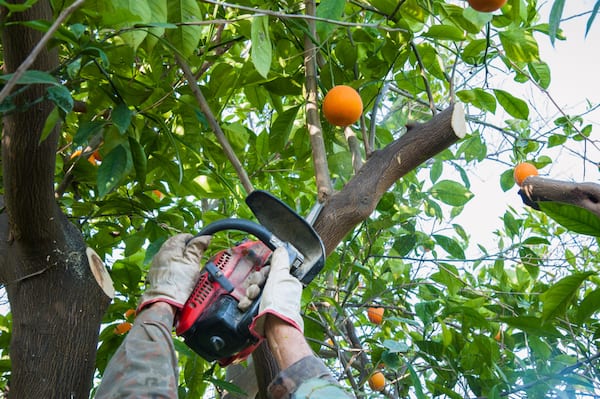
How and when to prune an orange tree for a better harvest – step-by-step guide
Our site is reader supported, this means we may earn a small commission from Amazon and other affiliates when you buy through links on our site.
Pruning your orange tree serves several purposes – removing dead branches; increasing air circulation; sculpting the tree’s shape; and improving next year’s harvest. Here’s how to prune your orange tree successfully, step by step.
Five reasons to prune your orange tree
Remove dead or diseased branches
Pests or diseases on your tree may cause the leaves and branches to become diseased and even die. (See Orange tree pests and diseases for details.) Carefully remove the affected parts of the tree without spreading the insects or disease to the rest of the tree
Remove suckers from beneath the graft
Dwarf orange trees (usually grown in pots) are orange trees that have been grafted onto dwarf roots to keep their size small. The graft ‘bump’ is where the trees join up. Any new growth below the graft bump takes away from the tree’s energy without producing any fruit. Remove these suckers to save the tree energy.
Remove branches to increase air circulation
Tree branches which are packed too tightly together prevent a free flow of air. This is turn encourages disease and pests to move in. Prune branches from the inner section of the tree to provide room for the air to move around. It’s important to remove any branches that cross each other. This also lets more light into the centre of the orange tree.
After the fruit harvest
Pruning the tree after you’ve harvested the oranges cuts away older growth and allows the tree’s energy to focus on new growth and bud development. In addition, it reduces the amount of harvest the next year which is usually overkill for what the tree can comfortably support. Too many oranges can stunt the growth of young trees.
Control the tree’s growth / sculpt the tree
Sometimes the branches of your orange tree may ‘run away’ on you, growing in directions that you don’t want them too. Additionally, some branches may grow longer than others, giving a lop-sided look to the tree. Prune the branches so that they are even and give an attractive shape to the overall tree. Pruning in this way also encourages side branches to develop for a fuller shape
How to prune your orange tree
Decide why you’re pruning your tree.
Take a look at the overall tree shape and identify the branches you’re going to prune.
Remember that you can take off some of a branch instead of the whole branch. If you’re going to do this, choose a place to cut that’s above a leaf node.
Sterilise a clean, sharp cutting tool. This is especially important if you’re taking off dead or diseased branches or leaves.
Make an angled cut in the branch with the cutting blade pointing towards the stem (i.e. away from you). Try to make a clean cut; it causes the tree more stress if you hack away at the branch.
Sterilise the cutting tool again and cut the next branch. Repeat.
Optional: use tree wrap (breathable fabric) to cover any exposed stem or branch until it heals.
Stop after every few cuts and review the shape of your tree. You may need to change your pruning plan depending on how you’re doing.
When to prune your orange tree
The best time to prune your orange tree is in the spring before new growth appears. Of course, if you’re pruning after the fruit harvest, that’s likely to be the autumn. And prune the tree straight away if you notice any dead or diseased parts.
